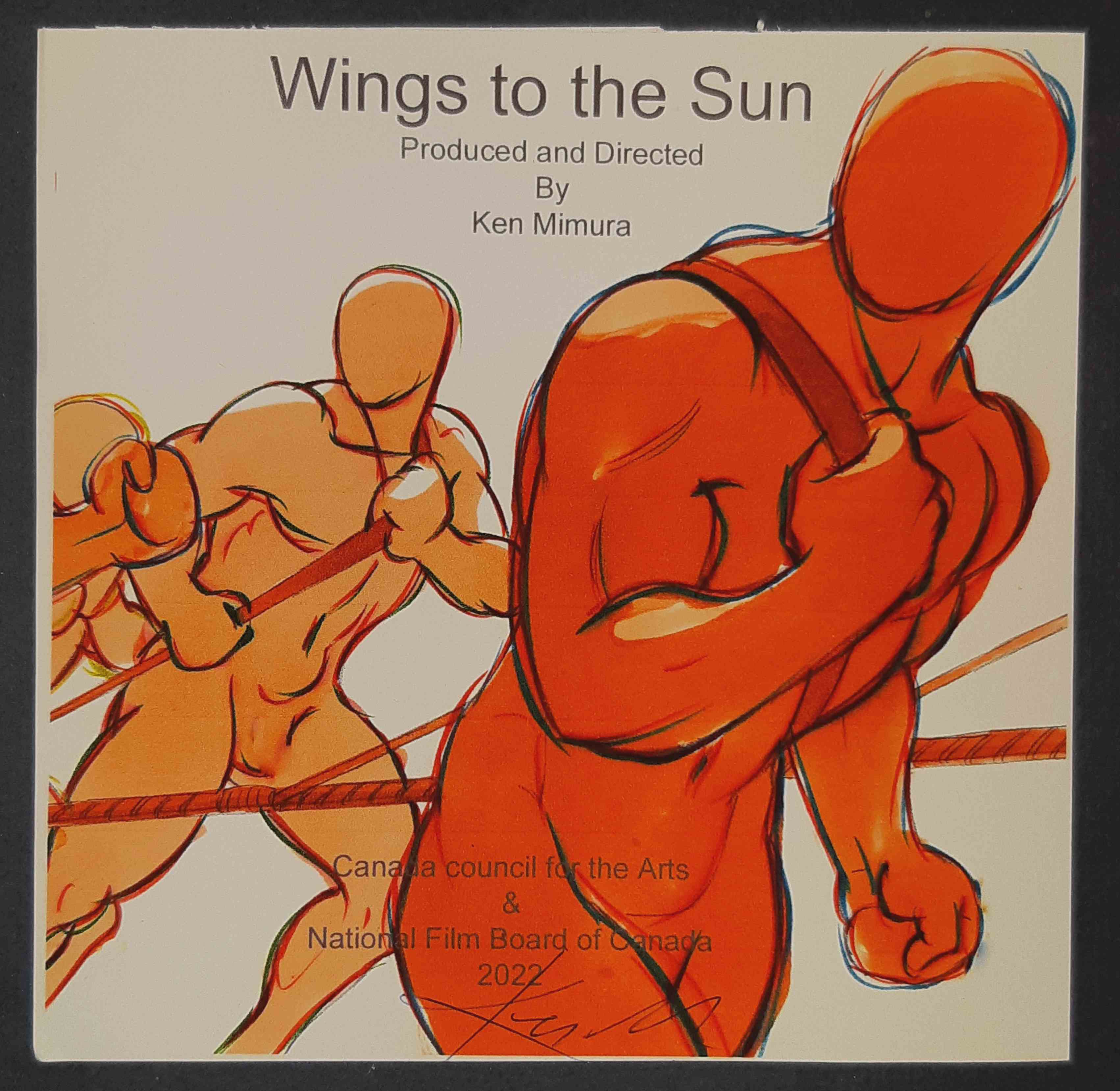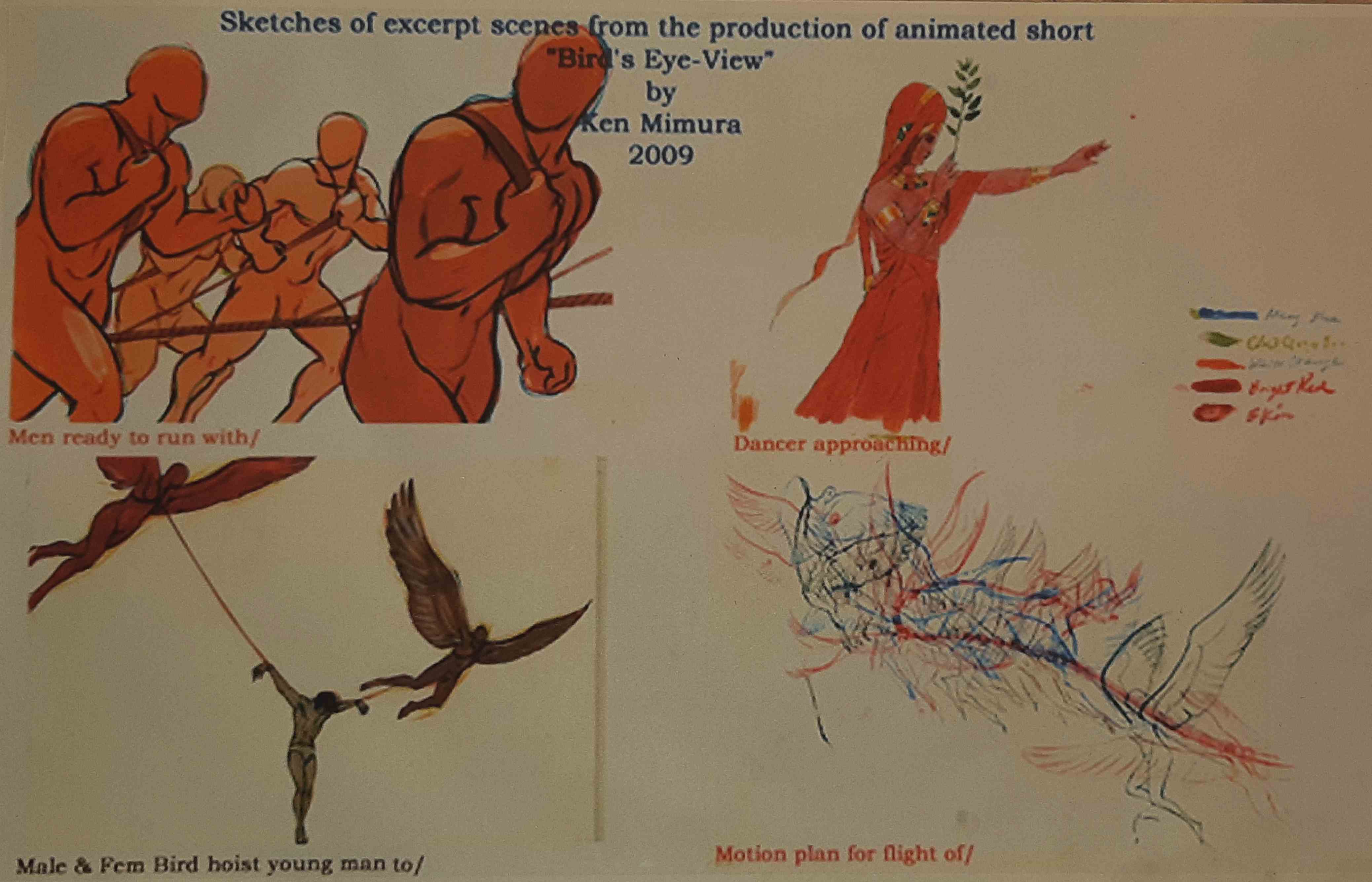Background Notes to the Story Concept “Wings to the Sun”
A film written, animated and produced by Ken Mimura
March 24, 2022

Sometime between 100 B.C. and 700 A.D. the Nasca people of Peru created huge earth drawings on the Nasca Plateau. These lineal drawings (Nasca Lines) depict a bird, a spider, a monkey and other animals of importance in the culture of this community. Though current researchers agree that these earth paintings were of ritualistic significance, no one has truly unlocked their millennium-old enigma.
The National Geographic Magazine issue of May 1975 reviews these drawings in some detail, and recent public television broadcasts also explore the topic. But what is never made clear, and still puzzles the historians and archaeologists, is why these drawings are on such a grand scale. My question is, how they were viewed without a high vantage point? Native people and cultures in Mezzo America have historically performed human sacrifice to their Sun God on top of pyramids. It is reasonable to assume that the indigenous people of the Nasca also worshipped the sun. Given the vital importance of the weather on the survival of these people, their fear of the wrath of the Sun God was undoubtedly great. A bird, or any creature that existed above the ground and thus closer to the sun, could be considered as a medium between the people and the Sun. These creatures were drawn in huge lineal graphics on the ground, so that the sun god would notice the people below.
Thus, they offered what could be considered the ultimate sacrifice, the precious life of a young, healthy tribal member. But why did they create such huge drawings (geoglyphs)? It is this question that I used as the starting point for my hypothesis which I then expanded into an imaginative story. Starting from the huge, stylized “Hummingbird” figure, I built my insight unlocking the enigma into a visual concept called a Story Board.
I then reviewed the characteristics of the other graphic images on the Nasca plateau and correlated further facts and questions. It is situated near the Pacific Ocean, today’s Peru where there are regular windy seasons and prevailing winds at regular times of the day!

Is it conceivable that the Nascan could have used a kite to deliver their sacrificial offering? Was the long continuous line on the ground a trail for a procession in which the people would walk without having to trace back on themselves or over-cross their steps? In a mile-long loop to exit at their entrance location?
Would the enormous trapezoidal shapes make sense as runways for dozens of strong men to run along while pulling ropes raising a giant kite against the wind? That the trapezoid was wider at the upper part might be for minor directional adjustment for the wind changes at the hour.
The drama seemed to come to life of itself.
So I began to make an animated film with 7,000+ colored drawings on paper and cell.
This story is a theatrical dramatization with artistic license that brings home our underlying fascination with the unexplained phenomena of ancient civilizations and their ritualistic ceremonies to appease the god to provide rain for the growth of their crops.
The creation of this drama is my free depiction by means of traditional animation techniques to inspire individuals and academic groups who have been studying the Nasca lines. This is my way of unlocking one of the enigmas of a vanished civilization in dramatic form.
I chose to animate by hand with pencil and brush to enhance the quality of human touch, just as the people of Nasca scraped the ground with hands and tools to draw their stylized figures.
So I labored with my hands and sweat just like the Nascan did.
It was an event held by hundreds of Nascan people with a giant kite they built!!
I imagined the long continuous line marked on the ground to be used as the path for the procession of the people for this festival. They would walk with flowers, fruit, incense and herbs accompanied with instrumental music and chanting, in single file along the winding trail to the farthest point and then all the way back to the entrance point on parallel trail to the entering trail.
It was a celebratory procession and a spiritual event.
The young man who voluntarily sacrificed himself in this ritual was possibly given some traditional herbs to ease the physical challenge. My drama is not to be interpreted as a violent one.
It was people praying for rain and water, the most vital element to all living souls.
At the ending sequence: The sound of rainfall fades my drama into total peace with rainbows over their land.
Above note written in: March 1987 and Re-edited in 2021 May Vancouver, British Columbia, Canada
This film was filmed at the National Film Board of Canada by myself.
Ken (Kenichiro) Mimura
Special thanks to Canada Council for the Art
Pepe Danza of Paraguay for his music.
Subject material was chosen from the Nasca (Nazca) Lines, however there are geoglyphs (Land graphics) in other part of the world as well.
The Nasca Line was my stage background for my original vision and idea.
Original title was “Birds Eye-View”, Copyright registered title is: “Wings to the Sun”, completed in 2021 May.
*Any content, concept or visual element must not be used for other form of show, film, or book.